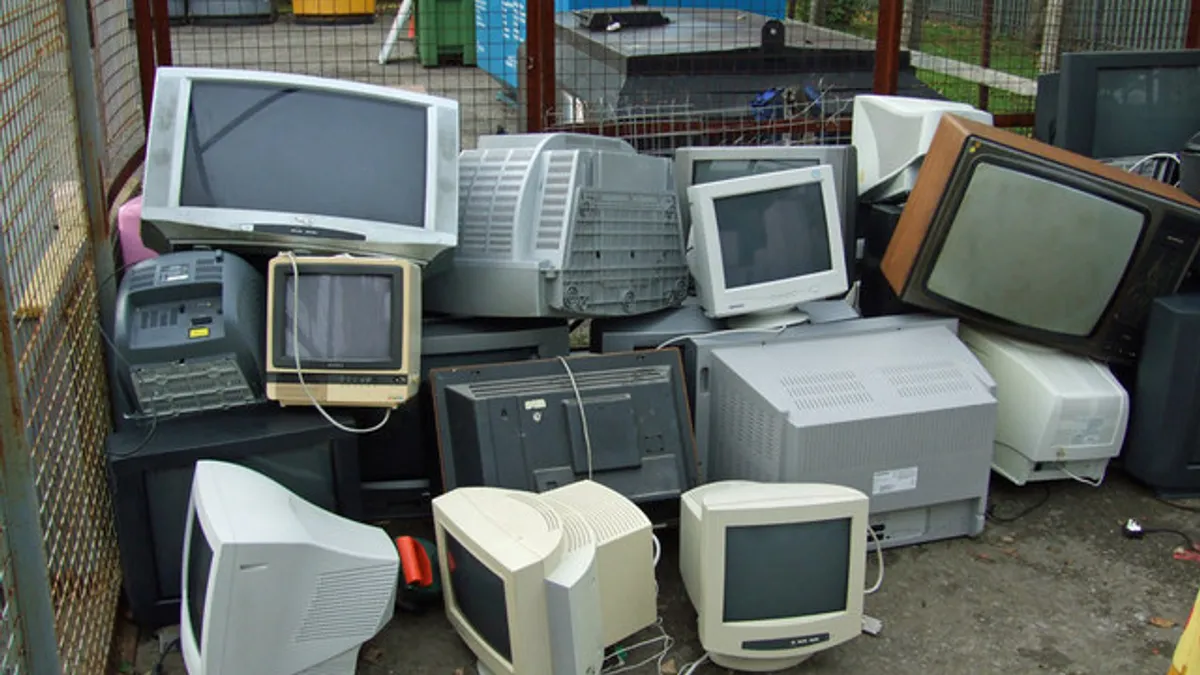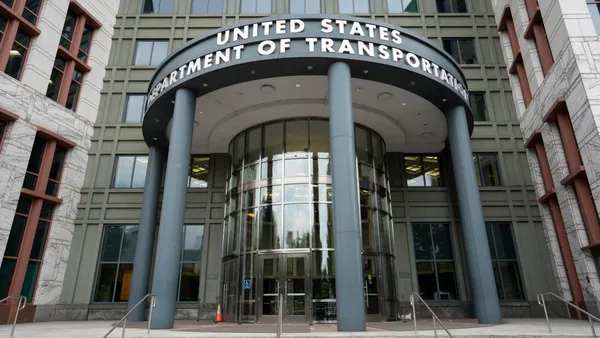UPDATE: Based on a successful pilot, New York's Department of Sanitation (DSNY) will be making appointment-based curbside electronics collection permanent on Staten Island and expanding it to three additional boroughs, as reported by the Staten Island Advance.
During the six-month pilot, DSNY collected 10,912 items from 6,036 appointments. The city estimates that this helped divert more than 400,000 pounds of material for recycling. The city has budgeted $1.1 million for the program in FY18, with plans for that budget to eventually reach $4 million by FY20 once its planned expansion is complete. As previously reported by Waste Dive, the city's contracted recycler ERI will now be charging for this material due to the rising costs of CRT units.
Starting this fall that program will include parts of North Brooklyn and later expand into the Bronx and Queens. Up to 40 appointments can be scheduled in each zone per day, Monday through Friday. Once an appointment is made residents are allowed to place up 20 items per household on the curb for collection.
Dive Brief:
- Due to the ongoing success of an appointment-based curbside collection pilot for used electronics in Staten Island, New York's Department of Sanitation (DSNY) now plans to expand the service to North Brooklyn. DSNY Commissioner Kathryn Garcia delivered the news at a preliminary budget hearing before the City Council's sanitation committee on March 27.
- ERI, the contractor which handles electronics collected from multi-unit buildings and drop-off events, had been accepting this material for free on a trial basis. Though due to the challenging costs of CRT units they will start charging the city for this service as of January 2018.
- DSNY has been collecting an average of 40 tons per month through this curbside pilot and allocated $1.3 million in funding for it during the current fiscal year. Official numbers on these additional costs are still being analyzed, though DSNY estimates that it will cost about $420 per ton of material collected.
Dive Insight:
This program was started after the state enacted a disposal ban on certain electronic devices in January 2015. While the city offers free collection for buildings with more than 10 units through its e-cycleNYC program and hosts frequent drop-off events, this hadn't been fully effective on the less densely populated Staten Island. Long lines of vehicles formed at the drop-off events, discarded TVs were common sights along the road and local officials started asking for a better solution.
After working with Council Member Steven Matteo, DSNY began rolling out the curbside pilot last year. Because the material can't be placed in standard collection trucks the city acquired new box trucks, along with cases for smaller devices. Three trucks with two employees each can now make up to 60 stops per day.
Through its existing multi-year contract with the city, ERI will still continue to cover processing costs for the 100 or so tons of material coming out of the multi-unit buildings and other material from drop-off events. Because the pilot wasn't included in the original contract the prevalence of CRT units — which comprise about 60% of the material collected across all DSNY programs — have made the economics untenable for ERI.
"Across the state there is not any money in the CRT portion of the waste stream. They're very difficult to deal with and manage," said Commissioner Garcia at the hearing. "We actually have been doing much better than the rest of the state."
The rest of the country has been facing similar issues with CRT units in recent years as well. Limited markets for CRT glass had led to nearly half of it being landfilled in California and multiple states are currently dealing with the consequences of stockpiles left by defunct recycling companies. While some states have begun to see the share of CRT units they're receiving drop as residents presumably get rid of them for newer models, they will still be turning up for years to come.
Due to these factors, and the various financial challenges with electronics recycling in other states, it's rare to see any type of curbside collection program on this scale. Charleston recently decided to discontinue its own due to rising costs. Though with a higher volume of available material, a longer term contract and the inspiration to reach a 2030 "zero waste" goal, it seems that DSNY has found a way to make the system work.














